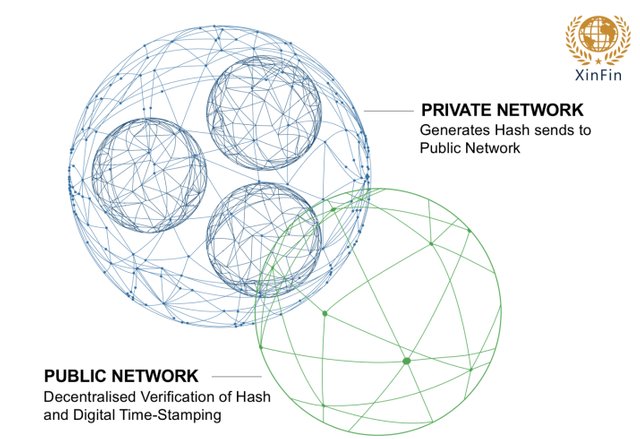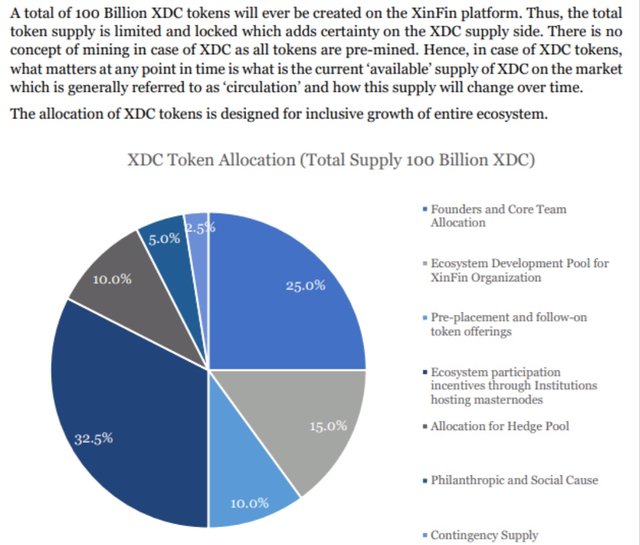XinFin’s Hybrid Blockchain Architecture – A Foray into Real-World Applications
The blockchain is an impressive technology that found favor in the eyes of enterprises that want to take advantage of a decentralized approach to business. The fiat use cases are not much despite these impressive strides.
Nevertheless, the solution to this nagging downside is coming through XinFin. It is worth noting that the platform has interest in the global trade industry and has plans to reinvent it for the better. We’ll look at XinFin’s use of a hybrid blockchain as a tool to fiat adoptions of the blockchain technology.
Existing Issues
Since the launch of the earliest cryptographic whitepaper by Satoshi Nakamoto, the blockchain technology has been undergoing different formulations. Earlier formed to be a platform for the creation and application of cryptographic currencies, the technology has grown to become a force to reckon with in the world of decentralization.
However, it is yet to gain massive adoptions in reality. This is partly because of the current architecture, which hardly supports interoperability, and the inability of prospective users to master the technicalities. Nevertheless, XinFin, in its quest to reinvent international trade from a decentralized outlook, is also considering a new blockchain architecture that will drive massive adoptions to the technology.
Introducing the XinFin Hybrid Blockchain
The core essence of XinFin’s positioning on a consortium of blockchain platforms is to facilitate its operations and make a cause for the technology. While it seeks to make a bold statement, XinFin also incorporates the dual functionalities of the public and private blockchain into is platform. In addition, it takes advantage of this to drive real-world adoptions and applications of its XDC Protocol.
Benefits of XinFin’s Hybrid Blockchain Architecture
By going hybrid, the platform integrates public and private blockchain platforms and makes use of the same to further its functionalities. It uses the decentralized and transparent approach of public chain networks to enhance trust among the parties that transact within its TradeFinex platform. It also uses the public network to store the record of transactions as facilitated by the built-in smart contract technology.
The private blockchain provides security and facilitated transactions to the platform. It also protects data gathered within the platform, making it hard for third-party interference. Above all, the private blockchain helps in driving XinFin’s cause for a decentralized approach to cross-border trades.
Token Information
Ticker: XDCE
Platform: Ethereum
Token Supply: 15 billion XDCE
Token Standard: ERC-20
Token Type: Utility
Country of Registration: Singapore
Wrapping Up
XinFin’s quest to decentralize international trade may seem tasking. However, the application of a hybrid blockchain architecture, which combines the security and transaction throughput of private blockchain networks, with the decentralization and transaction recording of the public blockchain can push the quest to a higher limit. Moreover, the features on ground are quite effective and can materialize into reality when applied in relevant areas.
WEBSITE | WHITEPAPERS | YOUTUBE | LINKEDIN | TWITTER | TELEGRAM | GITHUB
My Email: [email protected]
ETH Address: 0x9F3285d33a66483De7AaabB99F81467A292C3018


Congratulations @phashjnr! You have completed the following achievement on the Steem blockchain and have been rewarded with new badge(s) :
You can view your badges on your Steem Board and compare to others on the Steem Ranking
If you no longer want to receive notifications, reply to this comment with the word
STOPTo support your work, I also upvoted your post!
Do not miss the last post from @steemitboard:
Vote for @Steemitboard as a witness to get one more award and increased upvotes!